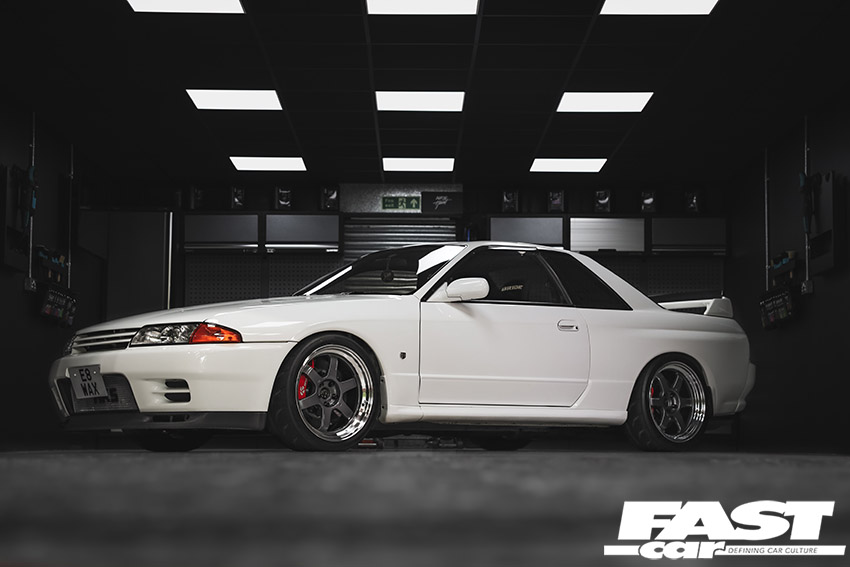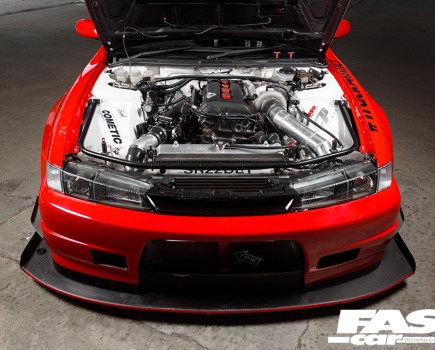The Nissan Skyline GT-R R32 rebooted the most revered JDM dynasty out there, cementing an almost mythical status around Nissan’s GT-R family tree. If you want one, here’s everything that you need to know.
Nissan Skyline GT-R R32 – History
Searching For Redemption
Despite the car’s beastly ‘Godzilla’ nickname, the R32’s origins stem from a more timid time in Nissan’s past. In the mid-eighties, Shinichiro Sakurai – the designer of the original ‘Hakosuka’ and ‘Kenmeri’ Skyline GT-Rs – fell ill. In his place, understudy Naganori Ito took over. Unfortunately, the car that resulted was met with an underwhelming response. The square bodied R31 had limited success on the circuit, and its sales figures less flattering. As the nineties beckoned, the pressure was on Ito-san to steer the Skyline ship back in the right direction.
To do this, performance on track would have to be one of the key focuses. So, while the 1989 R32 did come in a humbler four-cylinder specification, it was the six-pot GT-R flagship that was awarded the most attention. And boy did it pay off.
Two Key Ingredients: Power & Grip
Perhaps the biggest innovation was the engine. The mere mention of the phrase ‘RB26’ is enough to spark an avalanche of comments on social media. It’s this car, the R32, in which those sacred four characters were first applied. Using the established RB architecture, Ito-san’s team increased the engine’s displacement to 2.6 liters by extending its stroke. They also added a pair of turbochargers for good measure. This helped the car achieve 276bhp according to the official advertising. In reality though, roadgoing R32 GT-Rs were actually outputting a figure north of 310bhp. However, a gentleman’s agreement between Japanese marques prevented Nissan from claiming so. What’s more, the core parts of the engine cope with 500bhp for use in Group A racing; something which served as music to the ears of dedicated tuners.
However, it’s not just the RB26DETT which makes this car special, it’s how it delivers the engine’s power too. The R32 GT-R relies on Nissan’s ATESSA E-TS all-wheel drive system, a novel solution which (depending upon the circumstances) can vary how much torque is sent to each axle. For instance, when cornering at pace, the torque split skews towards the rear. That way, the GT-R handles with a similar poise to a rear-wheel drive car, but still retains the traction advantages that come with sending power to all four corners. Likewise, if you’ve gone into a bend too hot and the rear begins to slide, up to 50% of the torque can be sent to the front, helping you to regain control.

Godzilla Takes Over The World
Thanks to this tantalizing blend of traits, the Nissan Skyline GT-R R32 was an instant hit on the racetrack. The Australians would go on to brandish it with the ‘Godzilla’ nickname due to its notorious dominance within their national racing scene, while over in Nissan’s motherland, the R32 was literally unbeatable. Between 1989-1993, the GT-R took part in 79 races across the Japanese Touring Car Championship and slightly less prestigious Super Taikyu series, winning every single one of them. Naturally, strong sales figures for the roadgoing R32 soon followed.
To celebrate, the GT-R got a special edition V-Spec moniker, where V stands for Victory. V-Spec cars benefitted from attractive 17-inch BBS rims wrapped in a set of Bridgestone Potenzas. A new Brembo brake package was also added, including 324mm front rotors and 300mm rear rotors – an increase over the standard car. Plus, in order to cater for those wider rims and tires, the all-wheel drive system refined further, too.
Overall then, it’s fair to say that Ito-san had made amends for the lukewarm R31, and in fact, some might argue that he eclipsed the efforts of his beloved predecessor. Naturally though, thirty-odd years down the line, certain weaknesses within the car have begun to show.
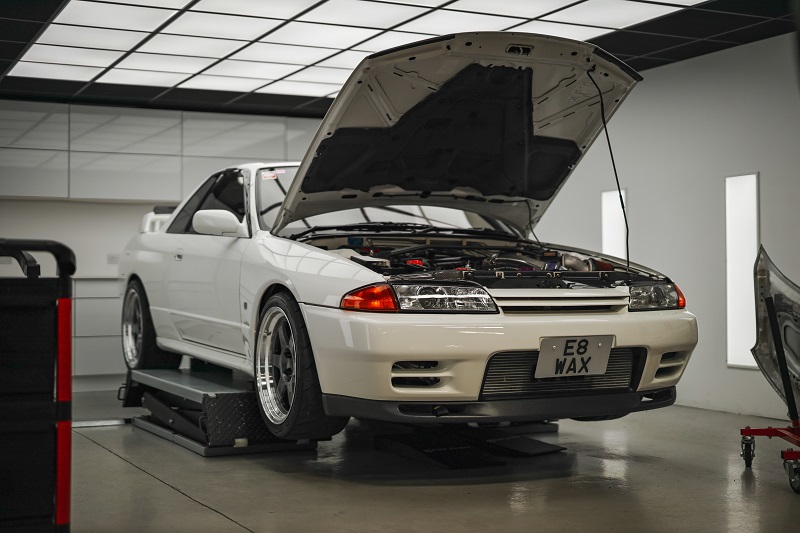
Nissan Skyline GT-R R32: Top 5 Common Problems
- Oil pump failure
- Stock turbo failure
- Hidden (or not so hidden) rust
- Faulty HICAS system
- Worn synchromesh
Nissan Skyline GT-R R32 Engine & Transmission
The RB26-DETT has a glistening reputation amongst the automotive tuning community, and for good reason. In stock form, these power units are highly durable, but like any thirty-year old performance engine, it wouldn’t be unreasonable to expect some fragilities to have emerged by now.
Oil Flow Issues
Hindered oil flow is a big thing to watch out for. Ideally, what you want to see is the oil pressure gauge reading around 2.0 bar at idle, and 4.0 bar higher up the rev range. Take the reading with a little pinch of salt however, the stock oil gauge goes awry. Generally speaking though, you want to be seeing figures close to that threshold. If the reading is significantly less, then you could be looking at oil pump failure, and all the imminent terminal maladies that come with it.
If you notice a misfire, this is likely to be down to a faulty coil pack. In most cases, this shouldn’t be too much cause for concern, as replacement packs aren’t that difficult to come by. However, if it’s temperature rather than age that’s killed the coil, that could be another indicator that all is not well with the engine’s fluid circulation.
This Achilles heel of the RB26 was eventually ironed out by Nissan in 1993, by equipping the car with a wider oil pump drive. So, while it’s good to have your wits about you when viewing any R32, these oil flow issues are mostly relevant to earlier examples.
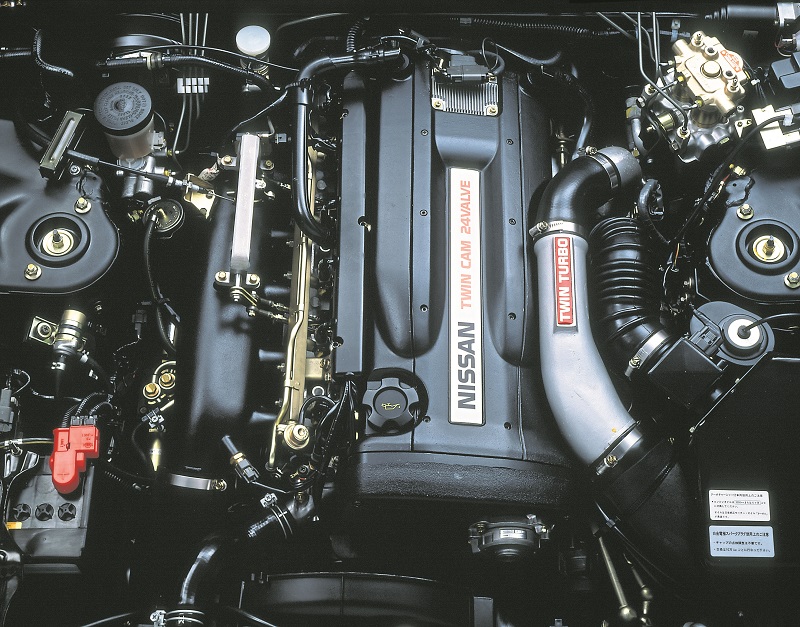
Troublesome Turbochargers
The next thing to inspect should be the twin turbos. Like any other turbocharged car that’s getting on a bit, you need to be testing for power-sapping boost leaks. It’s also worth bearing in mind that the R32’s stock turbos rely on ceramic components, which is both a blessing and a curse. On one hand, the compressor/turbine wheels are lighter which is great for lag reduction, but on the other, they’re likely to go bang if the boost has been dialed up way beyond factory settings.
So, if the R32 that you’re casting your eyes over still has a stock turbo set-up, liberal changes to boost levels is concerning. As standard, the R32 GT-R runs a boost pressure of 0.8 bar (12psi), however the boost restrictor is pretty simple to mess with. If it’s removed, boost will naturally rise to 1.0 bar (14-15psi). At that point you’d already be on the bubble of what those ceramic parts can handle, so anything further would just be asking for trouble.
While you’re under the hood, you’ll also be able to spot the VIN plate, which is blue on the R32, and attached to the firewall. Any signs of tampering should come as an obvious red flag.
Later Examples Need Cats
Then there’s the exhaust. Unless you’re looking at a mint standard car, the exhaust will almost certainly be swapped out for a louder aftermarket option, and sometimes this will mean that the car’s running a cat-less pipe. Crucially, if the example you’re looking at was built prior to 1992, then this is perfectly legal in the UK, as ’92/93 was the time when catalytic convertors were first introduced by law. If it’s a later model, then you’ll still need a cat to pass an MOT.
Shifting Gears
The transmission used in the R32 GT-R is pretty sturdy in truth, but cars that have endured harsher lives could be showing signs of synchromesh wear. Keep an eye out for any grinding between third, fourth, and fifth gear in particular, as gearbox repairs on this car can be rather costly. Likewise, a slipping clutch could also land you with a hefty repair bill in the not-so-distant future.
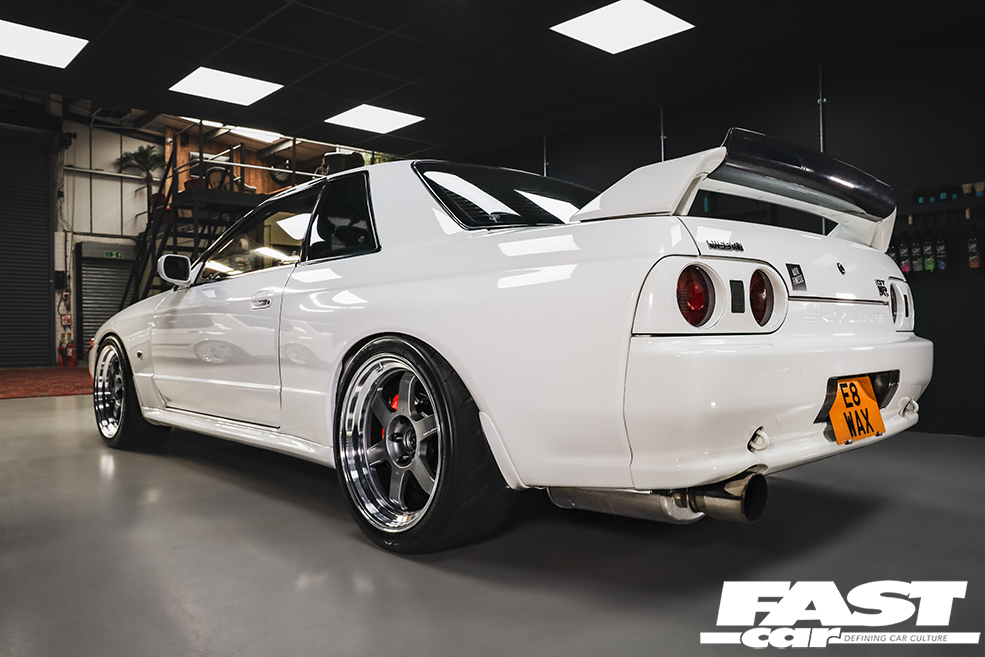
Nissan Skyline GT-R R32 Body & Chassis
When the Nissan Skyline GT-R R32 was first released, its bodywork was a major talking point. Compared to the safe, angular lines of the R31, the freshened-up R32 looked as though it was from a totally different decade. Today, the car still looks good, but those subtly sporty lines could be hiding a catalogue of horror stories.
The Dreaded ‘R’ Word
Rust can be an R32 killer, and there’s a few key rot hotspots that you should be aware of. As you would expect, the inner fenders and wheel arches (particularly at the rear) can be susceptible to flaking away, while a slightly less obvious one is the area underneath the rear window.
On top of that, jacking points can be vulnerable to corrosion if they’re bent out of line by careless jack wielders. If that’s the case, you should check to see whether there’s any other jack-induced bends in the chassis while you’re down there. But as for rust, skewed jacking points can create new areas for water and debris to collect behind the side skirts.
A Checkered Past
Moving onto other types of damage, it’s quite likely that a car of this ilk will have been driven hard at some point in its life. That’s to be expected, and not necessarily feared. What you do need to be aware of is if there’s any lasting crash damage. Check to make sure that the shut lines are fairly even. If they aren’t, this could indicate shonky panel repairs after a crash. If the bodywork hasn’t been repaired well, then you don’t even want to think about the internals.
From a cosmetic standpoint, small-scale paint repairs shouldn’t be something to put you off the car entirely. However, a more comprehensive respray that involves taking the windows out can be very expensive. That might sound blindingly obvious, but what you might not have considered is the hidden cost of replacing the rubber seals around each panel of glass. Original ones are surprisingly difficult to source. As a result, the bill can often end up being much more than what you bargained for.
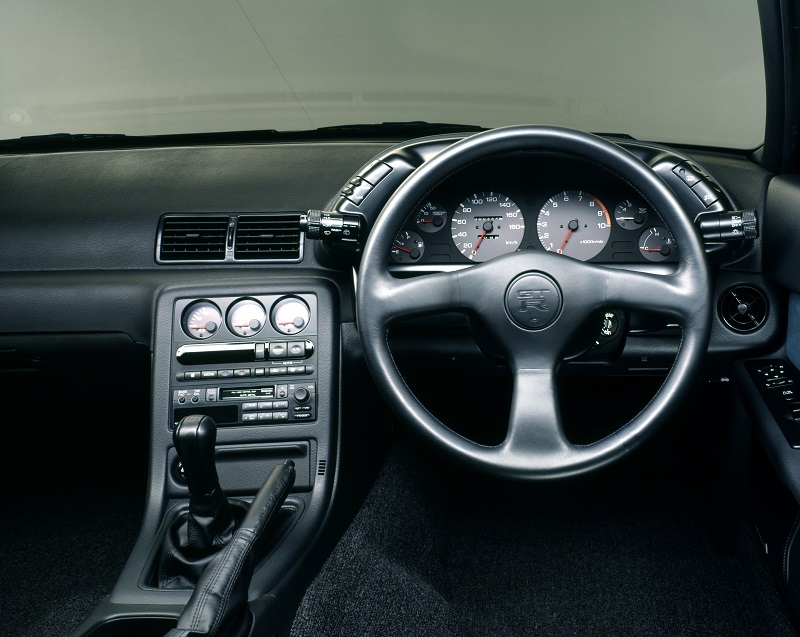
Nissan Skyline GT-R R32 Interior & Electrics
Rather impressively for a car this old, the stock electrical features within the R32’s cabin are still likely to work.
Aftermarket Additions
Really, the issues begin to arise when you’re faced with a car that’s had its interior workings tinkered with. These sorts of modifications, whether it be a new sound system or aftermarket gauges, can greatly enhance the driving experience. But, if done poorly, they can turn it into a never-ending source of frustration.
If the previous owner has quickly and cheaply bodged something together, you could be left with a lengthy list of intricate wiring jobs to sort out. That’s hardly a fun way to get acquainted with your new car.
Elsewhere, although the standard interior layout is quite drab and uninspiring, you can’t accuse it of being weak. In general, the materials and fabrics used inside the GT-R survive quite well. High-use touch points like the steering wheel, gear knob and driver’s seat might be starting to fray. Other than that, the plastics are likely to be in good nick.
Again though, some of the biggest problems that you may come across in this respect will be related to previous modifications. We mentioned before that the R32’s standard oil pressure gauge isn’t really up to the task. As a result, many have had aftermarket ones fitted. Sometimes that can involve drilling the new gauges into place. Don’t be surprised to find raggedy holes in your dashboard if you remove them.
You’ll also want to make sure that the car has a security system that actually works. Not only to protect your investment, but to protect your sanity too. Dodgy aftermarket alarms and immobilizers are a great way to rapidly fall out of love with a car.
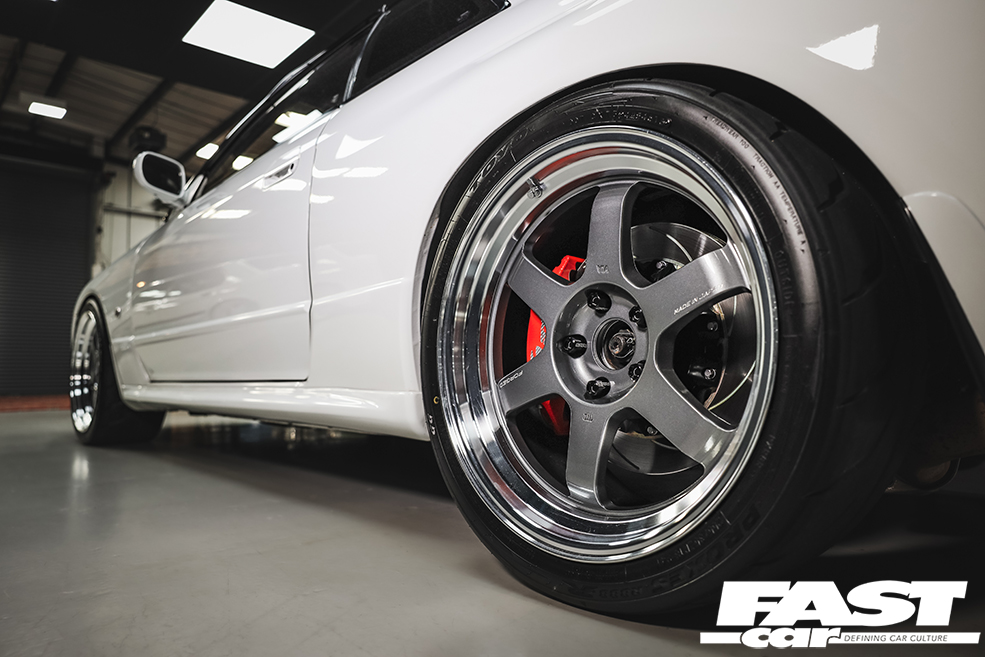
Nissan Skyline GT-R R32 Suspension & Steering
As if ATESSA-ETS wasn’t enough, the Nissan Skyline GT-R R32 has another neat party trick to help it corner as well as it does. Known as Super HICAS, the GT-R runs a four-wheel steering system. This wasn’t the first time that Nissan had incorporated the system into one of its cars. However, in the GT-R, it was updated to improve maneuverability at low speeds. Unfortunately, this feature is known to be a little less long-lasting than the rest of the car. Check to see whether any related warning lights appear on the dash. If it is indeed complaining of HICAS woes, be wary. It’s not a cheap thing to put right.
HICAS Deletes
That said, if you aren’t particularly bothered about four-wheel steering, you can simply buy a ‘delete kit’. This will save yourself money in the long run. Some people even choose to do this if the system is in good health. Although it does improve responsiveness, some drivers have complained that it also makes the car a little more unpredictable. Why? Well, to aid initial turn-in, Super HICAS starts off by angling the rear wheels in the opposite direction to the front. It then turns them back the other way. In a worst-case scenario, you can see how this might induce unwanted oversteer.
Worn track rods are another element of the steering that should be watched out for. Thankfully, these are a relatively inexpensive fix.
Stodgy Suspension
As for the suspension, any stock components are likely to be in need of replacement by now if they haven’t been updated already. Coilovers are a common mod, so if the example that you’re viewing is already running on a relatively fresh set, this will save you time and money (so long as they’re good quality parts). On top of the main hardware, the R32’s array of rubber bushings shouldn’t be neglected either.

Nissan Skyline GT-R R32 Servicing & Maintenance
The RB26DETT is an interference motor, so one thing that you definitely want to make sure is in good health is the timing belt. Typically, a Nissan Skyline GT-R R32 will need its belt changed every 60,000 miles or five years – whichever comes first. Have a look through the car’s history to find out when this was last done.
Oil shouldn’t be overlooked either. The manual recommends 7.5W-40, but this blend is increasingly difficult to find. Instead, you can get away with 10W-40 which tends to be a lot more readily available. You should be aiming to replace the oil approximately every 5000 miles. If it’s a car intended for track use, that interval will be considerably more regular.
Regardless of what you’ll be using the car for, you’ll want it to be on a good set of tires. The standard size is 225/50 R16, and there’s still plenty of high-end options around with those dimensions that should suffice. If you notice that the car’s on rubbish rubber from an unknown brand, this is likely to suggest that costs have been avoided elsewhere too.
Tech spec: Nissan Skyline GT-R R32
Engine: 2568cc straight-six
Max Power: 276bhp at 6800rpm
Max Torque: 260lb ft at 4400rpm
Transmission: five-speed manual
Max speed: 155mph
0-62mph: 5.6 seconds
Weight: 1430kg
Economy: 18.9 mpg

